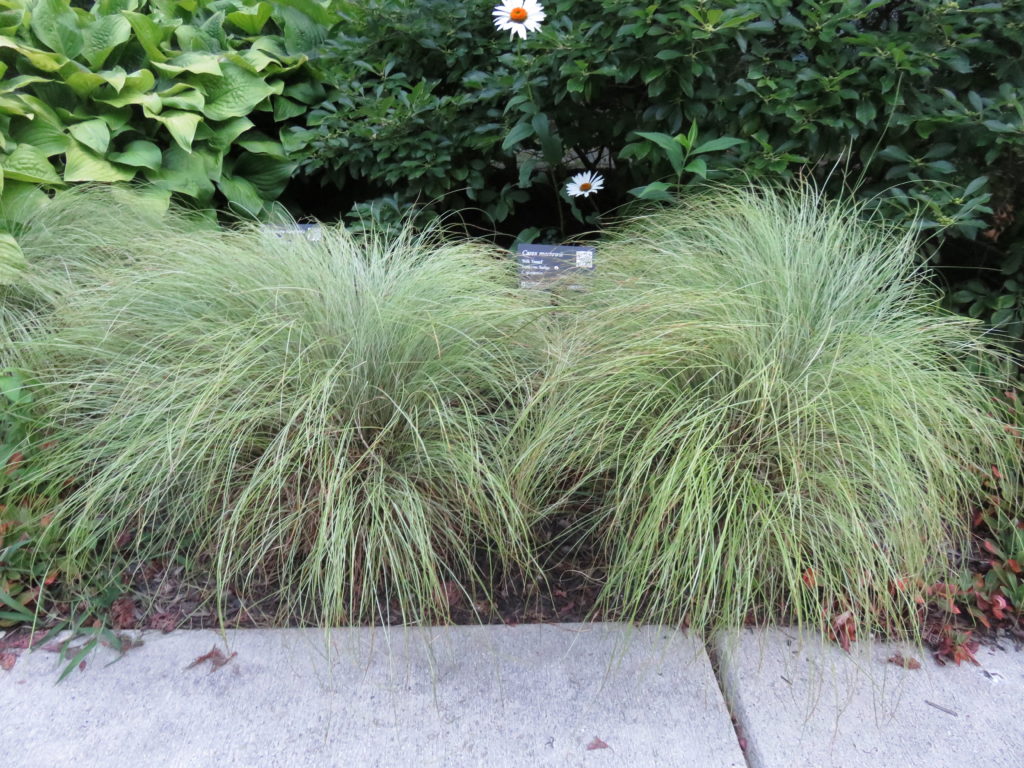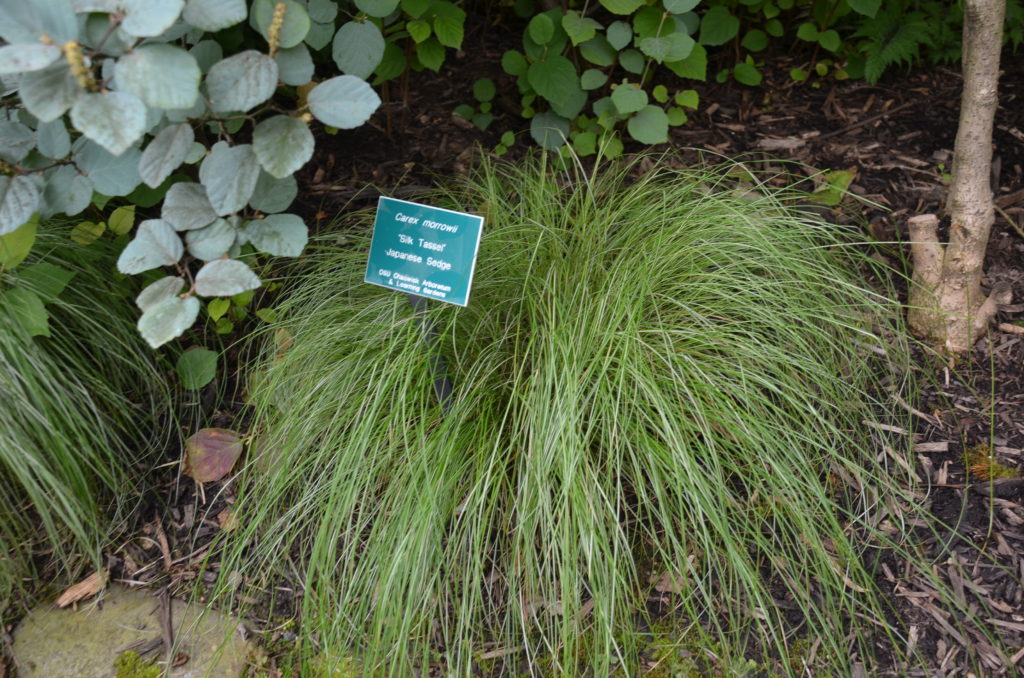‘Silk Tassel’ Japanese sedge is an outstanding Japanese sedge cultivar of Carex morrowii temnolepis. It is ornamentally grown in shade areas for its narrow (1/8 inch wide) variegated foliage (USDA hardiness zones 5 to 9). This dense, grass-like clump grows 12 inches high and 1 to 1 ½ feet spread.

Let’s start with an old well-worn adage — “sedges have edges”. ‘Silk Tassel’ has ultra-narrow leaves, that weeps as a fountain of fine-textured foliage. In mid-spring greenish-brown flower spikes arise atop triangular stems and are of no consequence. This sedge is evergreen in the deep South, holding its attractive foliage in summer, fall and much of winter.
Silk Tassel was introduced and named by Barry Yinger who brought it from Japan. The 18-inch-wide clump is deer-resistant and shimmers in the winter garden. ‘Silk Tassel’ lights up the woodland garden either utilized in a mass planting or several individual specimens spaced around a garden pond.
Silk Tassel tolerates moderate sunlight if the garden soil starts out humus-rich and is mulched in summer; otherwise, plant in partial to full shade. Foliage hues are cooler under shady conditions and appear washed-out in partial sun. Soils should not be permitted to dry out. Plants generally dislike hot and humid summers. In the northern part of its range, crop foliage down to the ground in late winter.

No serious insect, occasionally aphids, and diseases trouble sedges and, to repeat, deer tend to leave sedges alone
Group or mass as a ground cover in shade areas such as along paths and borders in woodland gardens. Also, an appropriate choice for low areas that may flood for short 1–2-day periods like low spots and stream/pond edges.
Annual growth rate is slow. Don’t wish to wait…buy in 1 or 2-gallon sizes to fill-in the planting more rapidly. Keep the media evenly moist. Avoid overwatering. Fertilize using a slow release, low-rate fertilizer.
Silk Tassel is a super companion accent plant added to containers on decks and patios and gardens. Use as a “spiller” in decorative containers next to hostas, coral bells (heuchera) and other bold-leafy plants.

 Posted in
Posted in 
